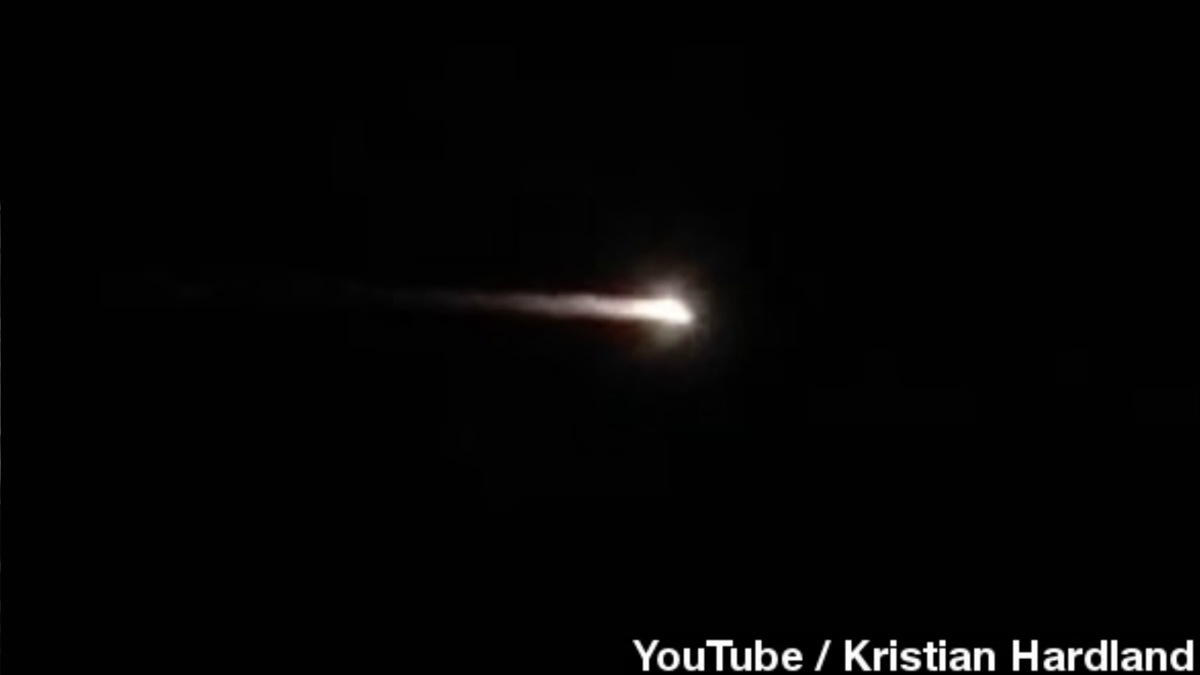Australian Fireball Caused by Russian Space Junk (Video)
The fireball that lit up skies over Australia Thursday night (July 10) was actually part of a Russian rocket falling back to Earth, according to media reports.
Observers throughout southeastern Australia reported seeing a bright meteor streaking through the skies at about 9:45 p.m. local time on Thursday. Based on the timing and trajectory of the object, experts have concluded that the dazzling fireball captured on video was caused by a piece of a Russian rocket that launched Tuesday (July 8).
"It looks like it was the upper stage of a Soyuz rocket that was launched a few days ago," Sydney Observatory astronomer Melissa Hulbert told the Australian Associated Press. "Apparently, the tracking and impact prediction matched, [in both] time and location, what we saw."
The piece of space junk that burned up so dramatically in Earth's atmosphere was likely about 11 feet wide and 5 feet long (3.35 by 1.5 meters), Hulbert added.
The Soyuz, which was carrying a Russian weather satellite along with six secondary payloads, lifted off Tuesday from Baikonur Cosmodrome, in the Central Asian nation of Kazakhstan.
Such manmade meteors are not uncommon, experts say. But many pieces of space junk return to Earth unnoticed, because they re-enter during the day or over uninhabited areas — such as the oceans, which cover 70 percent of the planet's surface.
And there is a lot of debris up there. NASA researchers have estimated that Earth's cloud of space junk contains at least 20,000 objects bigger than a softball; 500,000 larger than a marble; and millions of things too small to track.
Breaking space news, the latest updates on rocket launches, skywatching events and more!
This is all very disconcerting to spacecraft operators. At orbital speeds — roughly 17,500 mph (28,160 km/h) in low-Earth orbit — even a fleck of paint could damage a satellite should the two collide.
Researchers around the world are therefore working on ways to clean up space junk, with proposed solutions ranging from solar sails to tethers and giant nets.
Follow Mike Wall on Twitter @michaeldwall and Google+. Follow us @Spacedotcom, Facebook or Google+. Originally published on Space.com.

Michael Wall is a Senior Space Writer with Space.com and joined the team in 2010. He primarily covers exoplanets, spaceflight and military space, but has been known to dabble in the space art beat. His book about the search for alien life, "Out There," was published on Nov. 13, 2018. Before becoming a science writer, Michael worked as a herpetologist and wildlife biologist. He has a Ph.D. in evolutionary biology from the University of Sydney, Australia, a bachelor's degree from the University of Arizona, and a graduate certificate in science writing from the University of California, Santa Cruz. To find out what his latest project is, you can follow Michael on Twitter.

